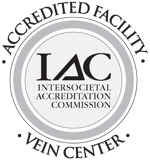Pulmonary embolism (PE) is a serious medical condition that occurs when a blood clot, usually formed in the deep veins of the legs or pelvis, travels to the lungs and blocks the pulmonary arteries.
This obstruction can have severe consequences and understanding the development, symptoms, and treatment of pulmonary embolism is crucial for maintaining vascular health.
The Backstory: How PE Sneaks In
Imagine a blood clot forming in the deep veins of your legs or pelvis. This is called deep vein thrombosis (DVT). These clots might decide to go on a little adventure and travel through your bloodstream until they reach your lungs. That's when things get serious, blocking those pulmonary arteries and causing a bit of chaos.
Spotting Trouble: Symptoms of PE
Have you experienced any of these symptoms? Shortness of breath? Chest pain that typically worsens with breathing? Coughing up blood or having a sudden feeling of dizziness? That's the red flag. It's like your body is sending an urgent text – don't ignore it!
Reality Check: Prognosis and Getting Back on Track
Now, if you suspect PE might be crashing your party, it's time for a checkup. Imagine it's like going to the doctor for a tune-up. Diagnosis involves some scans and blood tests. Imaging tests such as CT pulmonary angiography and ventilation-perfusion scans. Blood tests, particularly D-dimer, to detect the presence of clots. Good news: with the right diagnosis and quick action, the prognosis is often positive. But, of course, it's not a cakewalk. Severe cases may need some heavy artillery, like surgery or clot-busting medications.
Turning the Tables: Prevention is Key
Let's not wait for trouble to knock on our doors. Regular exercise, avoiding being a couch potato for too long, and perhaps some practical compression stockings. And, if you're in the high-risk zone, your doctor might prescribe some blood-thinning medicine.
In a Nutshell: Let's Stay Healthy Together
PE is serious, but it's not invincible. It requires prompt medical attention. Understanding its development, recognizing symptoms, and knowing the available treatments are essential for maintaining vascular health. By adopting preventive measures and seeking medical advice when needed, individuals can reduce the risk of pulmonary embolism and promote overall well-being. If you suspect you or someone else may be experiencing symptoms of pulmonary embolism, seek immediate medical attention.


.jpg)






.jpg?width=944&name=Castle-Connolly-Top-Doctors-Emblem-Large%20(4).jpg)